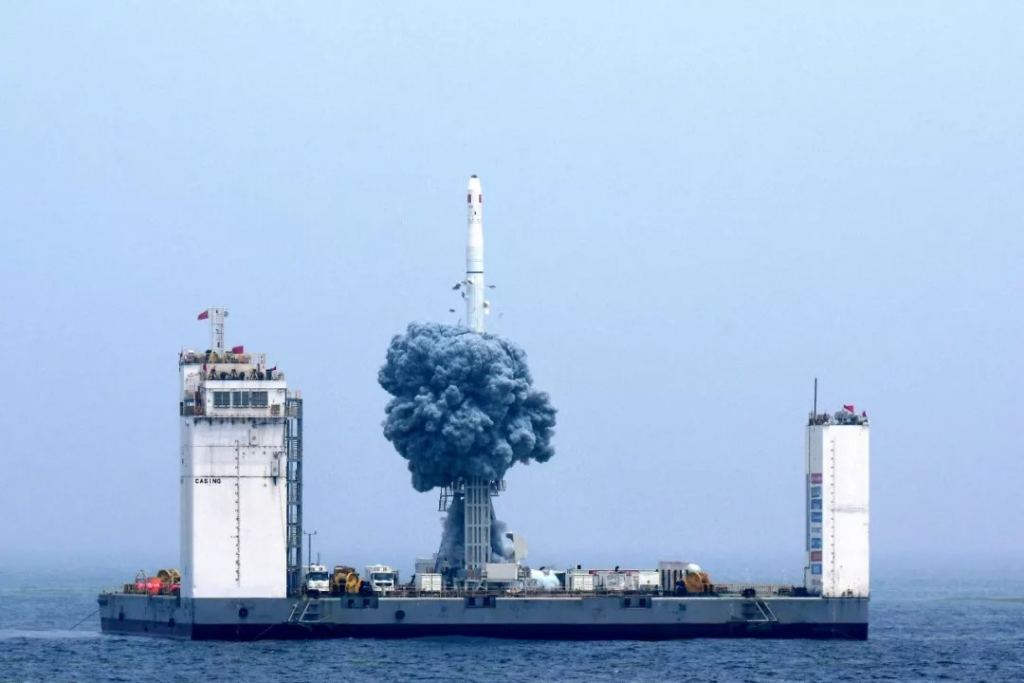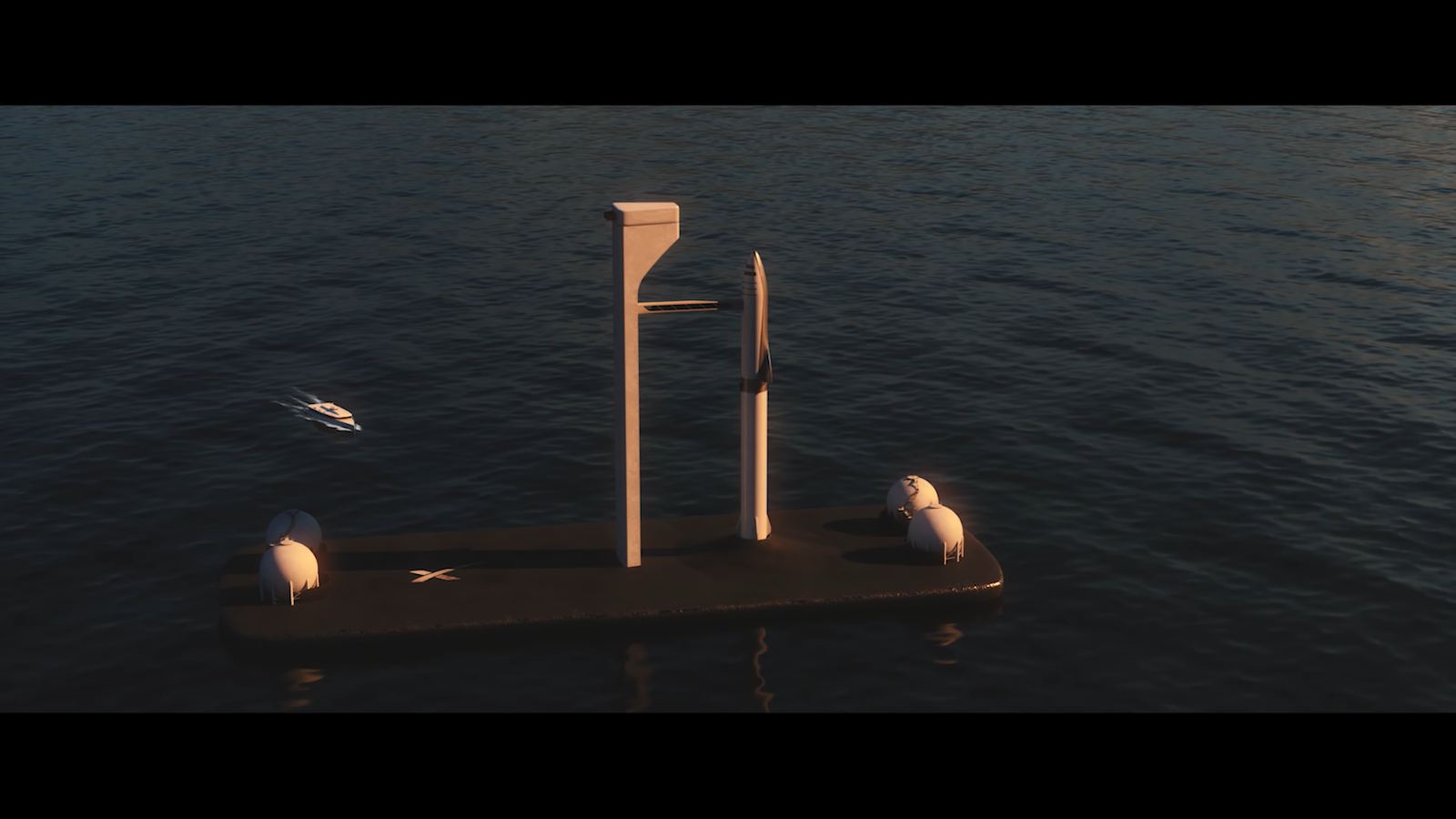Over the years, Elon Musk has been rather open about how he (and the company he founded) plan to make space more accessible and allow humanity to become an “interplanetary species.” A key element to this plan is the Starship and Super-Heavy launch system, which will allow for regular trips to the Moon as well as the eventual creation of the first human colony on Mars.
Another key part of Musk’s plan is the creation of spaceports at sea that will allow for greater flexibility with launches and landings. To that end, SpaceX recently acquired two former oil drilling rigs off the coast of Texas. These spaceports have been dubbed Phobos and Deimos (after Mars’ two satellites) and are currently undergoing modifications to conduct Starship launches in the near future.
For years, Elon Musk has been up front about his plans to use floating spaceports for future Starship launches. But the first hints that they were close to realizing this goal came last summer when SpaceX indicated on their website that it was looking for experienced offshore crane operators, electricians, and engineers. The postings also indicated that the jobs were related to the development of the Starship.
More importantly, the posting specified that the positions were located in Brownsville, Texas, the closest town to SpaceX’s Boca Chica Launch Facility. News of this was shared via Twitter back in June by Gavin Cornwell (@SpaceXFleet), who originally learned of it from photographer Dan Paasch (who regularly makes takes aerial photographs of Boca Chica to show the Starship’s progress).
Musk confirmed this from his own account shortly thereafter, saying that: “SpaceX is building floating, superheavy-class spaceports for Mars, moon & hypersonic travel around Earth,” later adding, “We need to be far enough away so as not to bother heavily populated areas. The launch & landing are not subtle. But you could get within a few miles of the spaceport in a boat.”
Two days later (Jan. 18th), aerospace and launch photographer Jack Beyer (@thejackbeyer) announced that while exploring around the port of Brownsville, he had picked up on some scuttlebutt regarding the platforms. According to what he heard, the platforms would be named Phobos and Deimos – the twin children of Ares, the god of war (Mars in the Roman pantheon) and the names of Mars’ two moons.
This was confirmed a day later by NASA Spaceflight’s own Michael Baylor (@nextspaceflight), who indicated that the nearly-identical rigs – formerly known as Valaris ENSCO 8500 and ENSCO 8501 – would fittingly be named after Mars’ twins. Whereas SpaceX has been recovering spent first stages at sea for years with their drone ships, these platforms will allow the company to conduct launches at sea for the first time.
And SpaceX is hardly alone in seeking offshore launch facilities. China has also been working on its own floating spaceport, which is located off the coast of Haiyang city in the eastern province of Shandong. Once it is fully operational, the “Eastern Aerospace Port” (as they’ve named it), will be China’s fourth spaceport and the only one that is not located inland.
Spaceports at sea offer a number of advantages over inland launch facilities. For starters, launches for inland facilities often result in spent stages falling back to Earth, which can pose significant damage to populated areas and result in hazardous chemicals and unspent propellant leaking into the ground. As such, inland facilities require extensive safety procedures and cleanup operations.

While SpaceX circumvents much of this danger by launching from Boca Chica and Cape Canaveral, SpaceX hopes to conduct regular launches with the Starship and Super Heavy. On top of that, this launch system poses a significant noise problem. Once complete, each Super Heavy will have no less than 28 Raptor engines, thought Musk has hinted that initial flights will have less (Musk has estimated that it might be around 20).
With regular launches taking place, this will mean that the blast areas around the launch pads will need to be wide, and noise concerns will also need to be taken into account. Similarly, Musk’s long-term plan for making regular trips to Mars call for orbital refueling, where a tanker version of the Starship modified to carry propellant will meet with and refuel a passenger/payload version of the Starship after they have reach orbit.
Musk has also hinted in the past that SpaceX could be conducting intercontinental flights with the Starship someday. According to an animation released by the company in 2017 (see below), this would involve having spaceports off the coast of major cities that would be serviced by passenger boats. Clearly, launches and landing at sea has been a part of Musk long-term vision for SpaceX for awhile.
Further Reading: NASA SpaceFlight


If SpaceX set up one of these modified oil rigs beyond the 12 mile limit, in international waters, would it still be under the jurisdiction of the FAA?